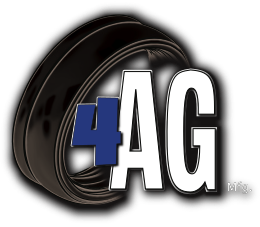Checklist for Planting This Season!
Are you ready to get your hands dirty in the garden? You must be ready with closing wheels for planters and set it right for the proper placement and depth. This is the last part of a planter and can affect the plants when set wrongly.
This pre-planting checklist will help you ensure that you're prepared for the upcoming growing season.
Planter level - It's important that the planter's tool bar is either level or slightly uphill when it's being used. Closed wheels and coulters run too shallow when planters tip over.
Bushings and parallel linkage - Row bounce is exacerbated by worn bushings, which in turn increases seed bounce. Check the bushings by wriggling the row unit up and down and back and forth from behind the unit.
Chain in drive system - Shock and vibration are caused in the meter by kinked links. Ensure that your chains are properly greased and checked frequently. Chains for transmissions, meters, and insecticide boxes are all included here.
Corn meters - Six or more bushels per acre can be gained with the use of calibrated meters. Take your meters and samples of your seed to a MeterMax representative to get an additional 2%, 4%, or more accuracy in your seed testing.
Double disk openers - Make sure the twin disks are in good contact by performing a test. Business cards can only be slid so far up the front of the disks before they become stuck. Try putting a mark there. Finally, slide the card from the rear to the front and stop when you reach the end. Measure the distance between those two points. The disks should be reshipped or replaced if they are smaller than two inches. The disks must be at least 14.5 inches in diameter in order to work.
Seed Tubes - The bottom of seed tubes should be checked for signs of wear. On the left side of the seed tube, you'll often find a little dog ear flap attached to the tubes. Use new ones.
The wheel method for closing - Rubber closing wheels may not be the only option. Consider running one spike wheel (15 inches) and one rubber wheel in cool, wet planting circumstances (13 inches). It is possible to use the spike wheel to aid in the fracturing and sealing of sidewalls in challenging soil conditions. An even more active technique for no-till may improve the closing of trenches the most aggressive motion is provided by two 13-inch spike wheels with a drag chain.
Wheel alignment for final closing pull - your planter about five feet forward while it is set on concrete. Take a look at the twin disk openers' imprint on the ground. The mark should be centered between the wheels as they come to a stop. You can correct a close-to-the-mark wheel by adjusting the closure wheels.
Row cleansers - Row cleansers can assist any planter that has a lot of residue and a lot of corn on it. Removing debris from the row helps warm the soil around seed trenches so that seedling blight and wicking are reduced. Row cleaners should be used to gently sweep residue, not soil. The row cleaners are on the move. They shouldn't be turning all the time. When going through areas with a lot of residue, they should gently rotate sporadically.
Seed firmers can help with germination - Six bushels per acre is the average increase in yield from uniform germination. Keeton seed firmers improve seed-to-soil contact and depth management, resulting in more uniform germination. The seeds will absorb moisture more consistently and emerge more evenly if you use Keeton seed firmers to place them in the seed trench.
Ask us at 4ag Manufacturing for closing wheels for planters. Let us guide you to set it right for the best crop placement.

